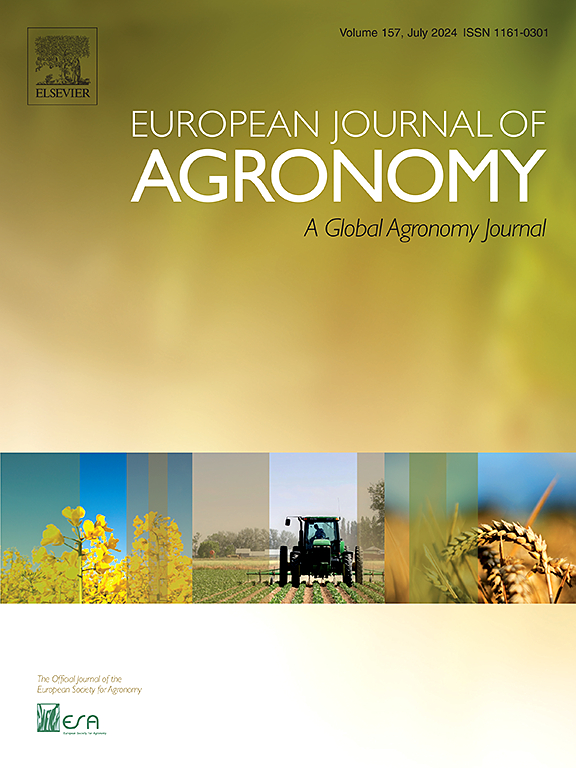Balancing economic and environmental goals in winter barley: the role of nitrogen timing and genotypes
IF 4.5
1区 农林科学
Q1 AGRONOMY
引用次数: 0
Abstract
Despite a relatively high share of cropping area in northern European agriculture, little is known about how nitrogen (N) fertilization in autumn and spring affects winter barley grain yield and the mechanisms involved. Based on a field trial from 2016 to 2024, the study examined the effect of eight N treatments (two autumn and four spring N levels) and two winter barley genotypes (hybrid vs. line), focusing on green area index (GAI), photosynthetically active radiation (PAR) interception, grain yield and N balance. Results suggest that yield increases from N fertilization were due to higher PAR interception, which boosted grain numbers per square meter. However, the effect of autumn N was minimal when spring N fertilization was sufficient. Although hybrids intercepted less PAR than lines, they used it more efficiently, consistently yielding more. To optimize yield and N use efficiency, we recommend using hybrid genotypes with spring-only N fertilization. Autumn N fertilization leads to higher N balances, making it unsuitable for meeting European environmental goals.
求助全文
约1分钟内获得全文
求助全文
来源期刊

European Journal of Agronomy
农林科学-农艺学
CiteScore
8.30
自引率
7.70%
发文量
187
审稿时长
4.5 months
期刊介绍:
The European Journal of Agronomy, the official journal of the European Society for Agronomy, publishes original research papers reporting experimental and theoretical contributions to field-based agronomy and crop science. The journal will consider research at the field level for agricultural, horticultural and tree crops, that uses comprehensive and explanatory approaches. The EJA covers the following topics:
crop physiology
crop production and management including irrigation, fertilization and soil management
agroclimatology and modelling
plant-soil relationships
crop quality and post-harvest physiology
farming and cropping systems
agroecosystems and the environment
crop-weed interactions and management
organic farming
horticultural crops
papers from the European Society for Agronomy bi-annual meetings
In determining the suitability of submitted articles for publication, particular scrutiny is placed on the degree of novelty and significance of the research and the extent to which it adds to existing knowledge in agronomy.
 求助内容:
求助内容: 应助结果提醒方式:
应助结果提醒方式:


